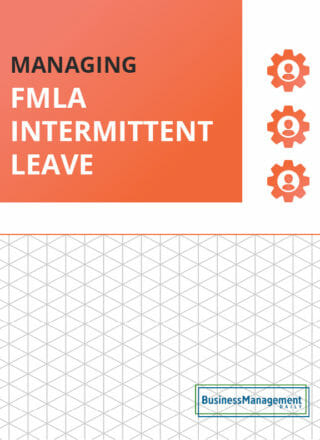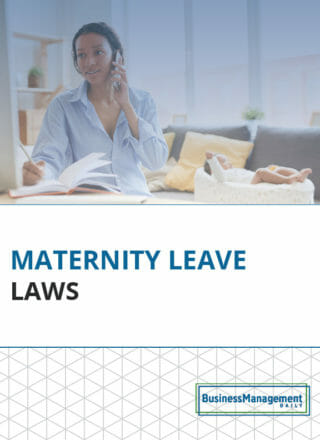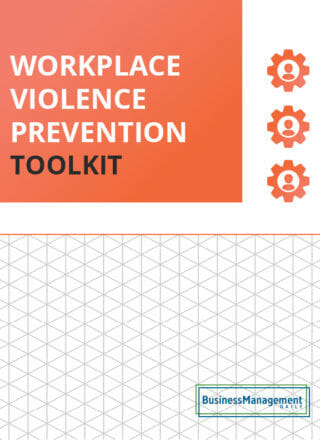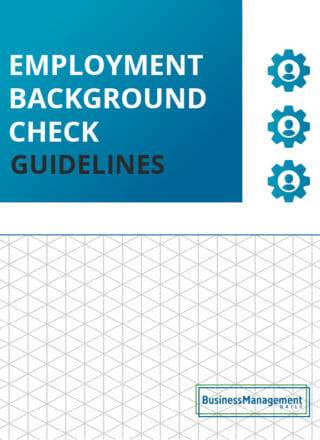How to design a return to work policy that doesn’t trigger a lawsuit
Tailoring return-to-work: Legal compliance and individualized plans
A good return to work policy helps ease an injured, disabled or ill employee’s reintegration into the workplace. A bad one, on the other hand, is an invitation to a lawsuit. One key is to create a good return-to-work letter that takes into account the individual’s unique circumstances.
Your return to work program should be tailored to the absence. Various federal and state laws apply, including your state’s workers’ compensation rules, the FMLA, and the ADA. Whether the employee missed work because of an on-the-job injury, personal illness, off-the-clock injury, or disability makes a difference.
Workers’ compensation absences
Employees who are injured at work are eligible for workers’ compensation benefits. These include payment of medical treatments such as surgery, hospital bills, and wage replacement for those who cannot work. When the injury isn’t permanent, and the employee is expected to resume work, employers need to set parameters for returning. For example, many injured workers can perform other work while recovering.
By assigning them light-duty work as the healing continues, you cut costs. You also reduce lost productivity and help the worker maintain skills and connection to the workforce. A worker engaged in the workplace is less likely to go out on permanent disability. Plus, instead of paying the employee because he is off work, you receive at least limited benefits from work performed.
Here’s how to design a good workers’ comp return to work policy:
- Establish a return-to-work team. Include a supervisor and HR staff member as well as an insurance carrier representative. Add someone from that office if you have internal occupational health and safety staff.
- Stay in touch with the worker and his doctors, paying particular attention to any medical and other restrictions ordered.
- If you have a light-duty program, see if restrictions are a good fit for an open spot.
- Your light duty program should list clear eligibility, entrance, and exit criteria;
- You should aim to have light-duty positions that allow a transition from very light back to the worker’s pre-injury job.
- Light duty and transitional jobs may be ones you already have in place. They can also be created specifically for your light-duty program.
- Check with your workers’ comp insurance carrier or manager to see if you are self-insured and how long light-duty positions last. Some carriers prefer an almost indefinite light-duty placement. However, leaving light-duty jobs open indefinitely may impact ADA accommodations (see below).
- Your light duty program should list clear eligibility, entrance, and exit criteria;
Once you have a light-duty return-to-work policy in place, share it with employees and their medical providers.
Disability and return to work policies
Workers hurt on the job aren’t the only employees whose return to work should be managed. Disabled individuals may also take time off to deal with complications and flare-ups of their underlying medical or psychological conditions. Plus, disabled workers may consider a light-duty position as a possible reasonable accommodation.
When a disabled worker asks for a reasonable accommodation, employers are required to engage in an interactive accommodation process. Essentially, you must sit down with the employee (or applicant) and discuss the disability and accompanying restrictions.
Together, you should identify which essential functions the employee cannot perform. Then share possible ways to accommodate. For example, if the employee is vision-impaired, you may need to provide computer software to enlarge print. Someone who has regular counseling sessions may need a later starting time to accommodate therapy.
ADA and light-duty: Reassignment as a reasonable accommodation
Some disabled employees may want to transfer to another position – including a light-duty one. Under the ADA, job restructuring is a reasonable accommodation. So is reassignment to another open position, which is generally considered a last resort accommodation. If you have explored other accommodations that seem unlikely to work, you should look at open light-duty spots.
As a general rule, you have no ADA responsibility to create a job for a disabled worker or applicant. However, if you have a light-duty program, you are obligated to consider a reassignment to one of those jobs. And if those light-duty jobs are permanent, you may have to let the disabled worker keep it indefinitely.
Why? Because the ADA says that you must accord disabled employees the same privileges as other workers. If you provide injured workers with indefinite light-duty work, that’s a privilege disabled workers also get.
On the other hand, if you don’t have currently open light-duty spots, you don’t have to create a new one. The ADA doesn’t require you to displace a workers’ comp employee to make room for a disabled one.
If you do allow a transfer to light duty as an accommodation, provide a return to work letter. It should set similar conditions. For example, if your light duty policy requires periodic review for recovery, do the same for disabled workers. Reasonable accommodations are always subject to modification as circumstances change.
Pregnancy, disability, and return to work
The U.S. Supreme Court has ruled that pregnant employees with temporary medical restrictions are entitled to reasonable accommodations. They, too, are entitled to open light-duty positions and other reasonable accommodations.
If temporary disabilities continue after giving birth, they may be entitled to more time off as an accommodation too. Just as for other disabled workers, if you have a workers’ comp light duty program, open it up during pregnancy.
The FMLA and return to work
Under the FMLA, employees are generally entitled to return to their old job or a substantially similar one immediately following the end of approved leave.
Some employees want to receive documentation showing the employee is fit for duty. You may condition return on fitness for duty under one circumstance. You must have a uniformly applied policy or practice that applies to all similarly situated workers. That can include a health care provider return to work certification stating the employee is fit to resume work.
However, other conditions apply. Employers cannot demand a return-to-work certification unless the requirement is stated upfront. You must include the requirement in your initial FMLA eligibility notice that you provide before the employee takes leave.
Some employers want more than a statement that the employee is fit for work. They may wish to ensure she can perform all essential job functions. If so, include a list of those functions in the initial demand for a fitness-for-work certification. Otherwise, all you are entitled to is a simple statement of fitness.
Once you receive the return certification, you must immediately reinstate the employee. There’s one exception. If the employee’s certification is unclear, you may request clarification from the medical provider pending reinstatement.
The return to work letter
You should have a standard letter you provide to all employees who are going to miss work for personal illness, injury, or disability. Your counsel should go over and approve the letter. If the employee is taking FMLA leave, the letter must be sent with your FMLA eligibility notice. The return to work letter should:
- Include a copy of your general return to work policy;
- State whether the employee is taking leave under workers’ comp, the ADA, or FMLA (or any combination);
- Include a copy of the job description with essential functions defined; and
- Include forms for the medical provider to complete





